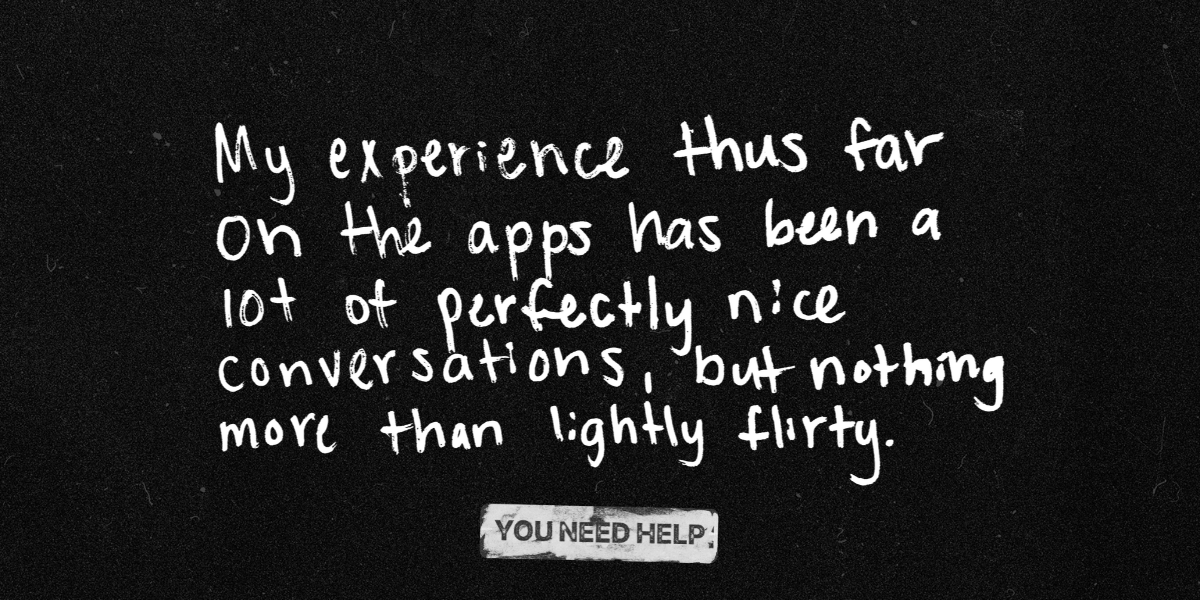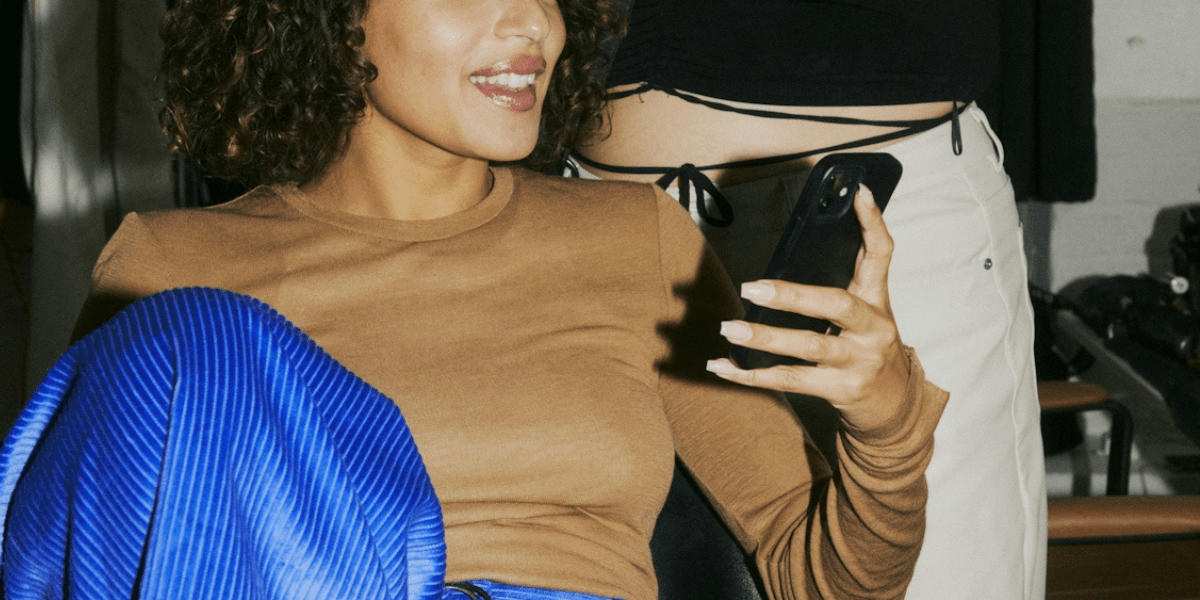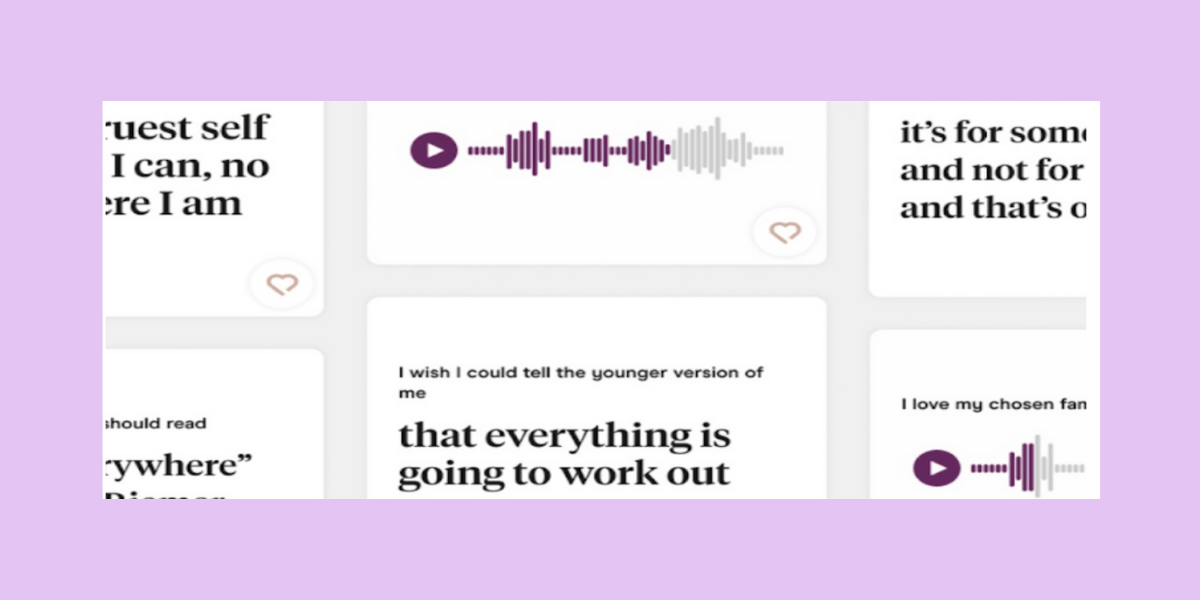Writing a lesbian, bisexual or queer online dating profile — whether on an app like Tinder or HER, or on a website like OkCupid — can be especially anxiety-inducing if you’re into alternative relationships. Do you put that you’re non-monogamous in your profile, or wait until you meet people to share it? Do you announce that you’re already in multiple relationships? Do you include pictures of your partners? What if you and your girlfriend want to find a unicorn for an occasional guest star role, and how do you create a profile that doesn’t come off as creepy or tacky? When swiping through the thirsty masses, what red flags should you look out for?
Here’s how to fly your ethical consensually non-monogamous, polyamorous, open, unicorn or whatever else flag in your online dating profile so you get the best possible interactions.

1. Put your relationship style in your profile, especially if you’re looking for more than sex.
Lead with what you’re available for! My Tinder profile highlights my polyamorous identity, along with all my identities, in the very first line: “I’m a queer white kinky polyamorous switch in two committed LTRs, and I am primarily into trans grrrls and MoC folks.” This sets me up for maximum success in that it automatically deters racists, vanilla folks, heterosexual cisgender people and monogamous folks. You could also try lines like: “I have lots of different types of relationships in lots of places, and I’m excited to see what kind of relationship I could have with someone else,” “poly/open, you should be too,” or “firmly poly/ethically non-monogamous.”
If you don’t make it blatantly obvious, especially in profiles aimed at relationships, that you’re only available for non-monogamous connections, you risk being accused of being “deceitful,” “tricking” or “wasting the time of” monogamous matches you follow up with. And to be honest, I don’t blame those folks one bit! Time is finite. If I were seeking a monogamous commitment and my match waited until the end of our first dinner date to say that she was non-monogamous, my brain would immediately run through all of the other ways I could have spent that time.
For a hook-up profile — like one on Grindr — it may not be necessary to list what your preferred relationship style is one way or the other, unless you’re notorious for catching fast feels after connecting sexually.

2. Be clear about the type of relationship(s) you’re open to.
Specificity is key for many non-monogamous people on the prowl. “Non-monogamy” is an umbrella term that includes a ton of concepts. There are dozens of ways to do lesbian, bisexual and queer non-monogamous relationships, so the more specific you get, the better. If you’re a relationship anarchist or a swinger, for example, say so. In general, it’s usually good to mention if you practice hierarchical non-monogamy, and if so whether or not you already have a primary partner.
Whatever language you use, remember that people have different working definitions based on age, geographical location, race, ethnicity, sexual orientation, etc., and that it’s good to go into any potential interaction with as few assumptions as humanly possible both about how someone else uses a word and about their understanding of how you use it.
For example, if I’m traveling for work and only in a city for a few days, my visiting profile might read: “Only in town for the weekend! Looking for new erotic friendships and hook-up buddies who want to stay in touch.” Simply writing that I’m in a “long term relationship” wouldn’t be enough information, since each long-term relationship looks different from the next and you’re not actually saying what you can get up to or not.

3. Point to your partners’ profiles if applicable.
Some people use the label “non-monogamous” dishonestly with the goal of gaining increased access to more sexual partners. These individuals are often in monogamous commitments IRL yet advertise themselves as non-monogamous online so that they can have their cake and eat it too, and most participants in ethical, transparent, consensual non-monogamy want NO PART of that cheating bullshit.
To assure possible matches that you truly walk the walk, consider including your partners in your profile, both in text — try “I’m in a wonderful primary relationship with an amazing queer femme” or “I’m in a committed relationship with an amazing bisexual man who loves seeing me get my needs met” — and in photo! I typically include a picture of myself with my partners alongside all of the solo pics I post to show off. Bonus points if your partner(s) use the same dating app and you can link to their profiles; this gives you a level of credibility that is ultra attractive to non-monogamy newcomers.

4. Remember that sometimes discretion is legit.
Despite everything I said earlier, there ARE a few legitimate reasons why people might not come out as non-monogamous in their dating profiles. Some people are on Tinder for only platonic friendships (hey, it happens!), or have a job in a conservative field and don’t want coworkers to see them identify as non-monogamous on OkCupid, or have kids and are afraid a partner might use polyamory to prove they’re an “unfit parent” in a custody battle. If you need to leave your alternative relationship structure out of your profile, I HIGHLY recommend including it — as well as the reason for its absence from your profile — in the first message you send a match. Try something like: “Hey there! Thanks so much for reaching out to me — I was really intrigued by [something very specific] on your profile. I believe in absolute transparency with online dating, and I wanted you to know right off the bat that I’m not currently available for monogamous commitments. I practice ethical non-monogamy with openness and pride, but I’m stuck in this conservative job where I can’t risk advertising that on a profile that a coworker could find! Hope you understand.”

5. Watch out for red flags.
Specifically:
-
- People who are “trying out” non-monogamy. You don’t want to be anyone’s experiment.
- People who are new to non-monogamy but haven’t taken the initiative to educate themselves through text, podcasts, workshops, discussion groups, etc. This indicates laziness and a predisposition against personal growth.
- Couples looking for unicorns. More on that below.
- People advertising that they’re only available for Don’t Ask Don’t Tell (DADT). It sounds like a con, and often is. Additionally, DADT relationships have a low chance of sustainability because they’re inherently not transparent.
- People who identify as “single” and “fine with non-monogamy.” These folks rarely have any experience with or desire for non-monogamy and will typically become problematic quite fast. If it were truly part of their identity or experience, they would say so.

6. Unicorn hunting: Proceed with caution.
“Unicorn hunting” is a controversial concept. While I don’t think that couples who want to add a third person to their sex life deserve any shame or ridicule, there is a certain finesse to seeking her out. Here are some tips and tricks to help you word your profile in the most authentic, respectful, mature way possible:
- If you want a unicorn, watch your wording. You may think you’re being cute by writing that you and your partner want to “spice things up!” or “add to the mix!,” but it can come off as objectifying and trivializing of whatever genuine connection you and your partner may make with someone. It’s better to be succinct, specific and sincere, and to name things for what they are, for example, “We are a loving couple looking to date a special person together” or “We’re loving girlfriends looking to meet a switch! Our ideal relationship structure is a triad.”
- If you want to approach a couple seeking a unicorn, consider the power imbalance. As a potential third, you’re often expected to be attracted “equally” (not a thing) to both individuals in the couple, to accommodate a predetermined list of rules set by the couple, and to “not rock the boat,” particularly by daring to communicate your OWN boundaries (gasp!). This is a hell of a lot to ask of someone who has a lot more to lose should the couple suddenly decide to break off ties. The couple has each other; meanwhile, the third loses connections with two distinct intimates.
- Couples who want a unicorn should deconstruct why unicorn hunting is often filled with entitlement and inappropriate expectations before seeking out a unicorn of their own.
- For everyone: Try the unicorn dating both individuals in the couple separately to see if everyone clicks. Confronting a potential third as a united front can come off as ganging up. Plus, we often show different sides of ourselves when we’re within a unit dynamic than we do when we’re a free agent, and allowing a unicorn access to all dimensions of each person may create a more authentic connection when all three come together.

7. Remember to carry honesty and transparency — as well as an open mind and lack of assumptions — into the actual dating process.
For real, though! If you put all of this effort into sculpting a non-monogamous dating profile, why self-sabotage it by losing your guiding light once you actually connect in person? If that isn’t enough to hold you accountable, consider this: non-monogamous lesbians, bisexuals, and queer women and folks are still a minority. Because of this, we communicate with each other. A LOT. Generally if one of us starts seeing a partner who doesn’t have a good track record with past relationships, it’s only a matter of time before our attention gets called to it. That kind of community solidarity and vigilance are — in my opinion — what truly differentiate non-monogamy from monogamy.








Comments
“People advertising that they’re only available for Don’t Ask Don’t Tell (DADT).”
You go to all this trouble to change the law and people are STILL using DADT to be douchebags. -_-
This is so brilliant and so clear, thank you !
And it applies to so much more, since it addresses how to express decency and respect first and foremost.
Sweet !
This is great!
This is brilliant and exactly what I needed that the rest of the internet hasn’t been able to find me. Have only recently started identifying myself as polyam in the last couple of months, mainly because I started by looking for a threesome and then actually fell in deep like with a couple I met through feeld. Hadn’t figured out how to put that on ‘mainstream’ dating websites though. So thank you for this awesome content ?
This is great info. Hate to be needy, but does anyone have some good queer poly infornation sites… I plan on dating again in 6 months to a year and would love how to learn to love everyone equally and learn how to balance everything.
I’m so glad to see this! I have been wondering about it. My spouse has been encouraging discussions about polyamory. A situation came up several months ago I thought through it and didn’t think I had the emotional bandwidth to do it right.
But the more I’ve thought about it I have been enticed by the idea of having kind of a romantic pen pal. Like a sexting friend? Is this a thing? I feel like this is a way I could enjoy it without constantly worrying that NRE would eat up my marriage completely.
Romantic penpals *must* be a thing. I’ve definitely had romantic friendships that were mostly comprised of handwritten letters filled with flowery and/or flirty messages. One of my pen pals sent typewritten letters with their sketches and designs on the envelopes. In between we would message each other with previews of the updates we wrote about that were too exciting to wait.
I loved looking forward to checking the mail. It was perfect and as low-key as a romantic interest can be.
I had a relationship like that with a former guildmate years ago. She and I sent flirty texts and Facebook messages and pictures and had conversations and all that while seeing other people. It was pretty neat while it lasted! I have no advice for how to find someone like that but it definitely does exist.
I’m glad it exists! It sounds like it could be really fun and life affirming. I have young kids and life can be a big grind and it takes a ton of emotional energy just to maintain my nuclear family relationships the right way.
“poly/open, you should be too,”
this isn’t cute. you don’t get to say what other people’s relationships should be like.
i think the “you should be” phrasing is about “if you wanna date me, you should be [x].” like “sober, you should be too” or “child-free, you should be too.” i feel like that’s a popular way to phrase things on dating profiles and certainly does not mean that everybody who reads it “should” be anything besides what they are. it just means that the person who wants to date the other person “should be” this or that.
Yeah I definitely read this the same way Riese did.
I have that very sentiment written in my tinder profile. And it’s there because I don’t want to date someone who isn’t Polyam/open. It’s not supposed to be “cute”, that’s my preference for dating. It keeps monos from matching with me and wasting both of our time. What should I say instead? “I’m poly/open, you can be whatever”? That’s not going to work.
I’m into most of this advice! But, unless you live in San Francisco or NYC, you will end up with very few queer poly people to date by excluding all the newbies and single people open to non monogamy.
It can also be super fun to be a unicorn or a non-primary partner! You get to go on dates and be sexy and then let them bicker about laundry and dishes after you’ve gone home. Communication is key
Yeah, I really liked this article except for those points. Everybody has to start somewhere. And blanket statements like “you don’t want to be anyone’s experiment” always bug me when I see them in any context. Some people might actually be just fine with being someone’s experiment. As long as there’s honest and open communication about expectations on both sides, what’s the harm?
Yeah, I agree that the phrasing rubbed me the wrong way (maybe because “being someone’s experiment” is often a thing used against bi/newly openly-queer women) a little bit. But I actually don’t think Andre is saying you shouldn’t date someone who is new to polyamory in general, but specifically someone who uses the phrase “trying out” non-monogamy (aka they see it as an exciting/novel experiment as opposed to a legitimate way to do relationships) or someone who says they’re new but hasn’t put in any effort into learning/educating themself. I think it’s fair to see those specific things as kind of red flag-y (although I’d agree that outside of NYC/SF it’s hard even if you just discount those things.)
So basically this advice is don’t be new at non-monogamy and don’t experiment with new relationship styles. Be committed to one thing and have done it forever ¯\_(ツ)_/¯
I know I’m being snarky, but seriously, one of the joys and pleasures of relationships is the possibility to learn, grow, heal, and experiment together. I’d be happy to date a person that was new to being queer or new to non-monogamy, and I expect my partners to be open, patient, and loving with me with all the things I am new at, too.
My experience: I was very, very clear that I am in and will only enter an open relationship. I said I preferred women (am a woman) but also like men. I also stated very, very clearly, NO THREESOMES.
90% of my matches wanted a threesome. I got one nice boyfriend from it in a whole year of use. https://linktr.ee/datingring
Love this list and took inspiration from it when I created a profile on what I think is the best ENM Dating App out there… https://www.itlenm.com
Have to agree with Skyla – ITLENM.com is by far the easiest app I have found for ethical non monogamy connections